
Filter News
Area of Research
- (-) Biology and Environment (60)
- (-) Energy Science (44)
- (-) Nuclear Science and Technology (2)
- (-) Quantum information Science (4)
- Advanced Manufacturing (3)
- Biology and Soft Matter (1)
- Fusion and Fission (6)
- Materials (12)
- Materials for Computing (1)
- National Security (5)
- Neutron Science (8)
- Supercomputing (38)
News Type
News Topics
- (-) 3-D Printing/Advanced Manufacturing (25)
- (-) Clean Water (11)
- (-) Composites (3)
- (-) Environment (72)
- (-) Frontier (3)
- (-) Quantum Science (4)
- Advanced Reactors (6)
- Artificial Intelligence (7)
- Big Data (7)
- Bioenergy (36)
- Biology (46)
- Biomedical (11)
- Biotechnology (8)
- Buildings (11)
- Chemical Sciences (7)
- Computer Science (18)
- Coronavirus (11)
- Cybersecurity (5)
- Energy Storage (21)
- Exascale Computing (4)
- Fossil Energy (1)
- Fusion (6)
- Grid (13)
- High-Performance Computing (12)
- Hydropower (6)
- Isotopes (2)
- Machine Learning (5)
- Materials (6)
- Materials Science (8)
- Mathematics (4)
- Mercury (7)
- Microelectronics (1)
- Microscopy (10)
- Molten Salt (1)
- Nanotechnology (5)
- National Security (3)
- Neutron Science (4)
- Nuclear Energy (18)
- Partnerships (5)
- Physics (2)
- Polymers (2)
- Security (3)
- Simulation (9)
- Space Exploration (2)
- Summit (8)
- Transportation (17)
Media Contacts

As the United States moves toward more sustainable and renewable sources of energy, hydropower is expected to play a pivotal role in integrating more intermittent renewables like wind and solar to the electricity grid
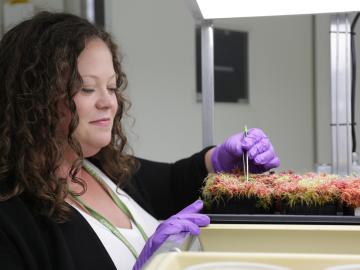
Microorganisms may provide hope that peatlands can withstand hotter temperatures in a changing climate.
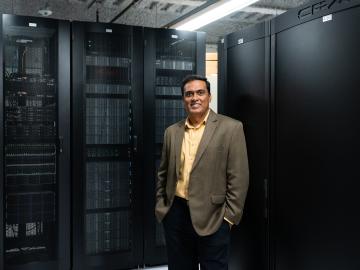
The Atmospheric Radiation Measurement Data Center is shepherding changes to its operations to make the treasure trove of data more easily available accessible and useful to scientists studying Earth’s climate.

Scientists develop environmental justice lens to identify neighborhoods vulnerable to climate change
A new capability to identify urban neighborhoods, down to the block and building level, that are most vulnerable to climate change could help ensure that mitigation and resilience programs reach the people who need them the most.

What’s getting Jim Szybist fired up these days? It’s the opportunity to apply his years of alternative fuel combustion and thermodynamics research to the challenge of cleaning up the hard-to-decarbonize, heavy-duty mobility sector — from airplanes to locomotives to ships and massive farm combines.

When Andrew Sutton arrived at ORNL in late 2020, he knew the move would be significant in more ways than just a change in location.
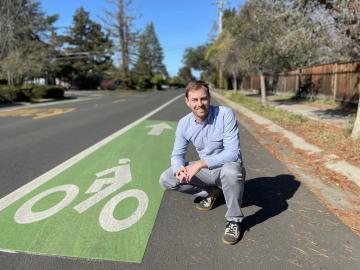
David McCollum is using his interdisciplinary expertise, international networks and boundless enthusiasm to lead Oak Ridge National Laboratory’s contributions to the Net Zero World initiative.
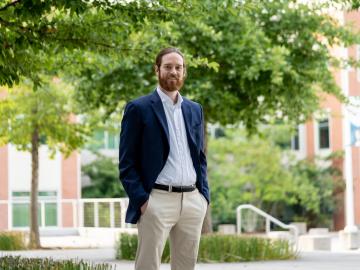
Bryan Piatkowski, a Liane Russell Distinguished Fellow in the Biosciences Division at ORNL, is exploring the genetic pathways for traits such as stress tolerance in several plant species important for carbon sequestration
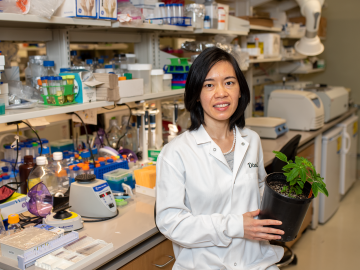
A team of researchers working within the Center for Bioenergy Innovation at ORNL has discovered a pathway to encourage a type of lignin formation in plants that could make the processing of crops grown for products such as sustainable jet fuels easier and less costly.

Surrounded by the mountains of landlocked Tennessee, Oak Ridge National Laboratory’s Teri O’Meara is focused on understanding the future of the vitally important ecosystems lining the nation’s coasts.


